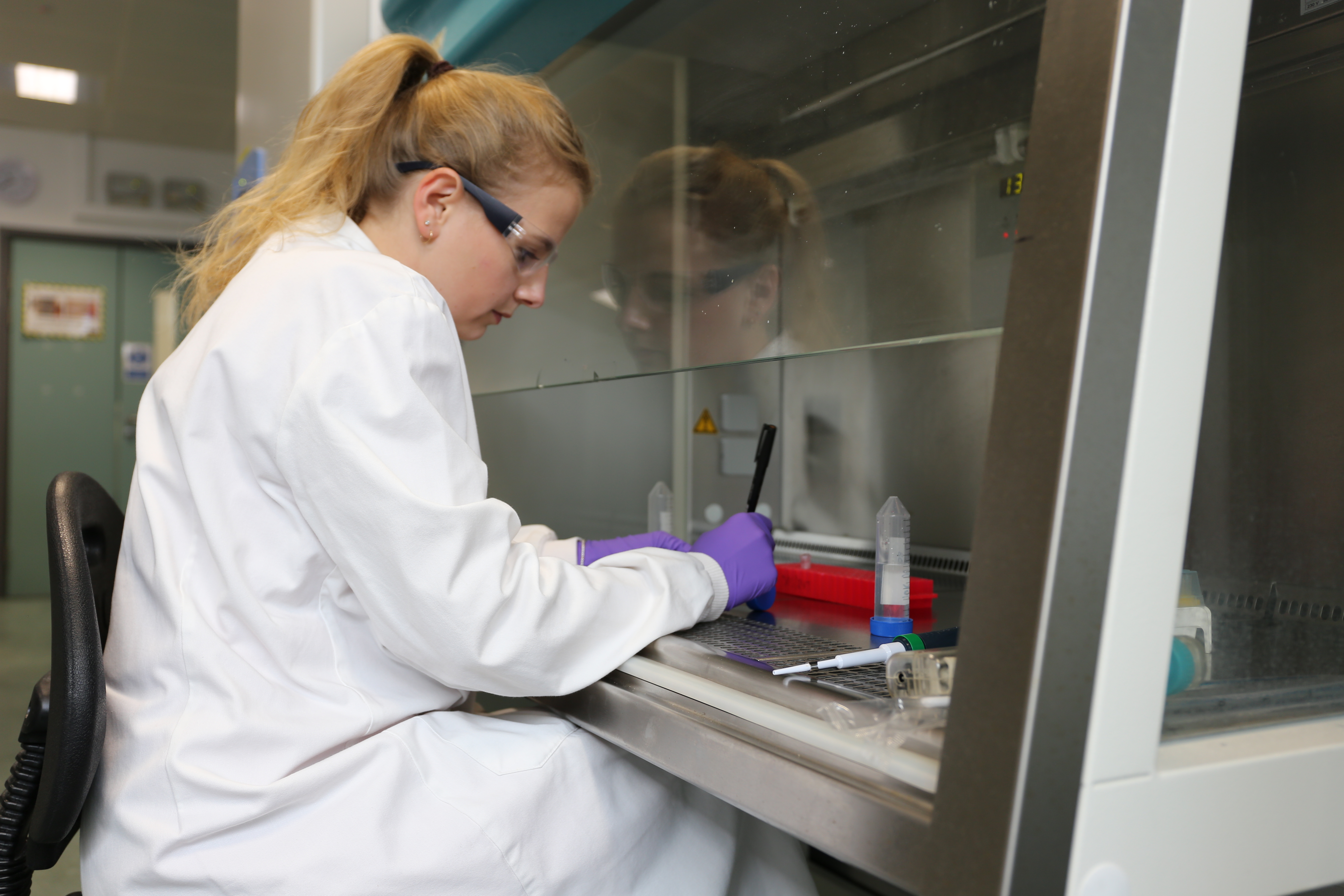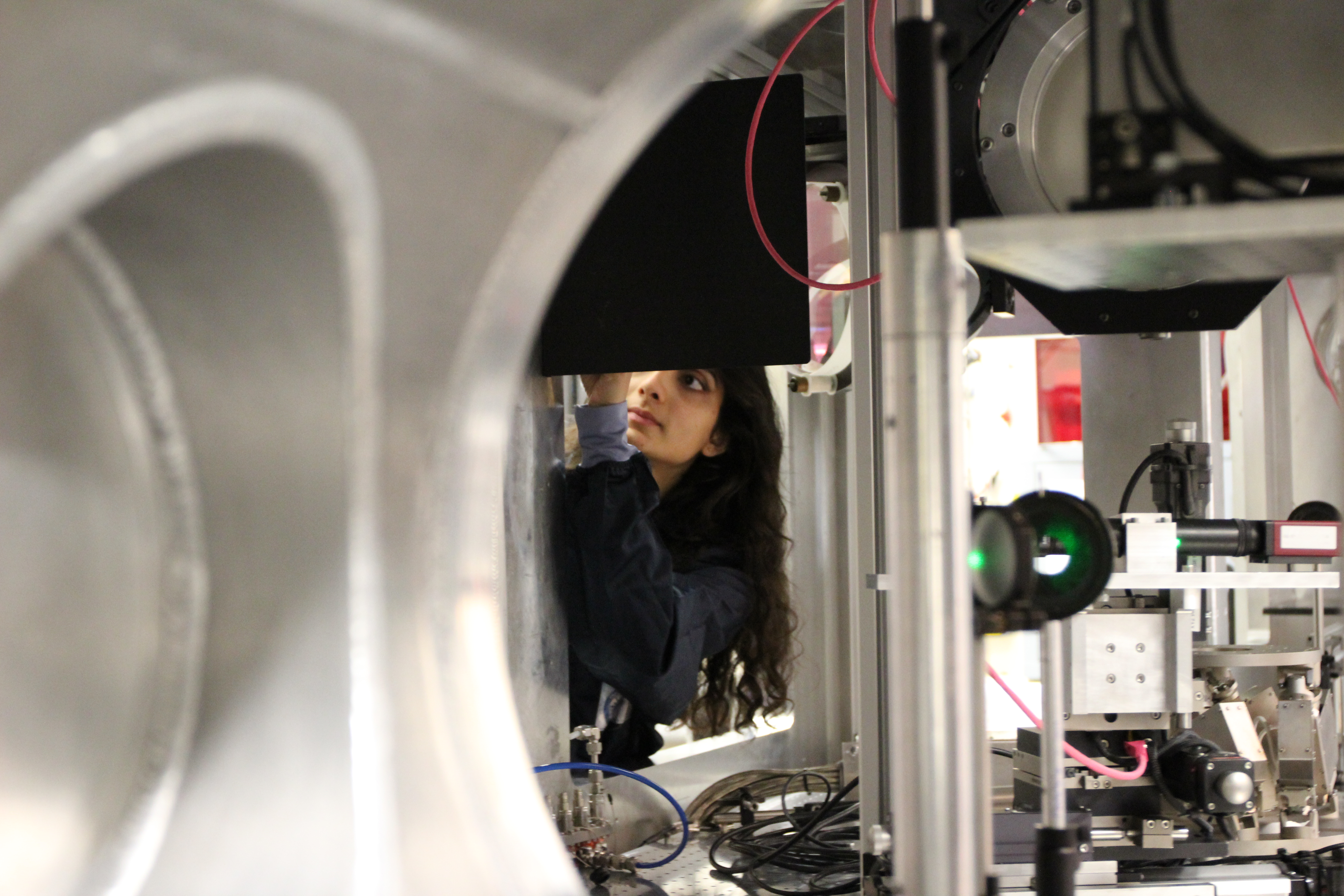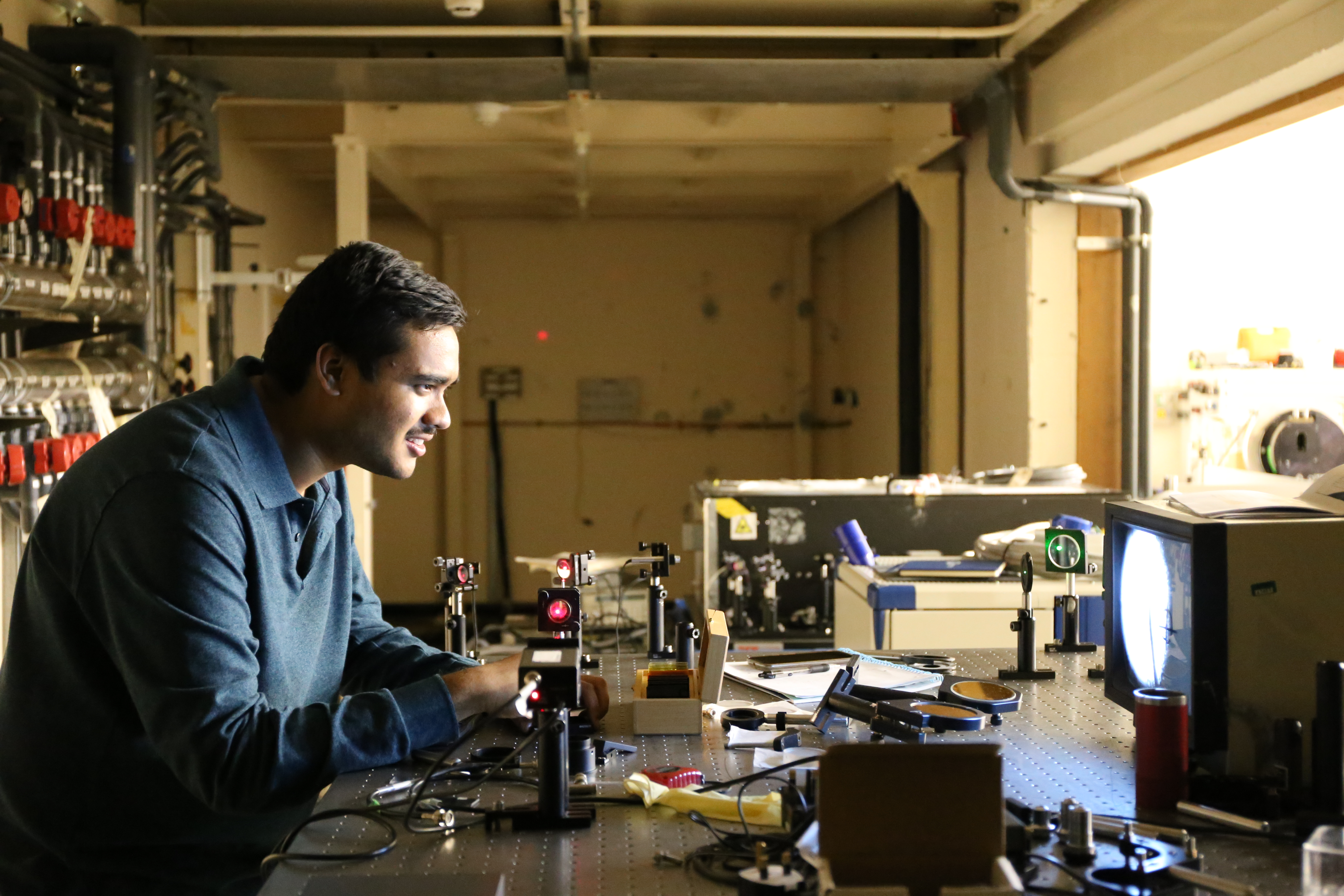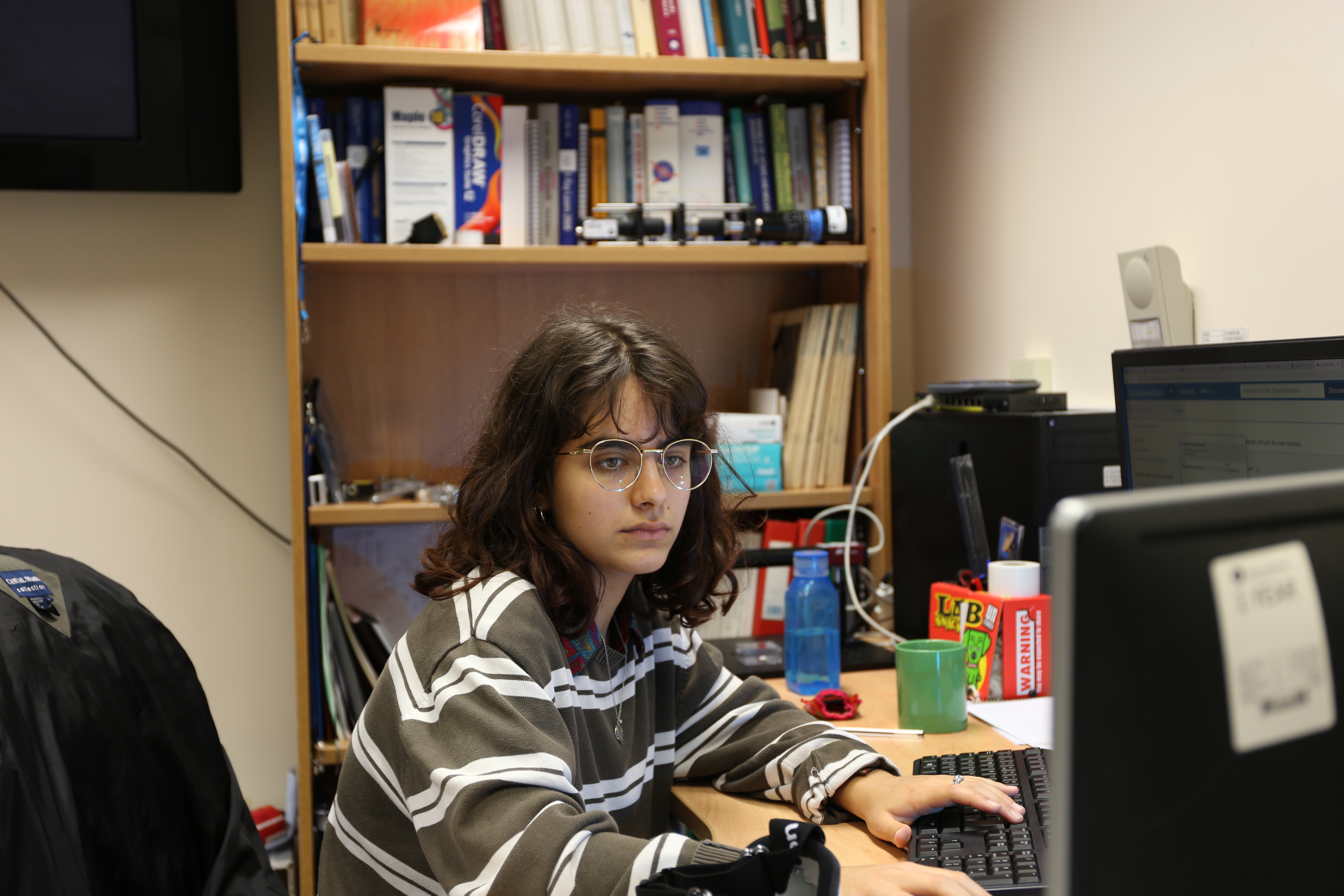As the Science Communication sandwich student, I was able to sit down with a handful of this year's cohort of sandwich students to discuss their time here so far. It has been an enriching experience to explore the diverse nature of the jobs that they are doing, especially to see the students making valuable contributions to the cutting-edge research being done at the Rutherford Appleton Laboratory.
Student Profiles
- Emerald Dilworth is studying Mathematics at the University of Bath and is working as part of the Vulcan Laser Operations team.
- Akash Dasgupta is a physicist from the University of Bristol working as part of Ion Acceleration for Medical Purposes within Vulcan.
- Asha Patel is studying Mathematics and Physics at the University of Leeds and is working on the Gemini Laser Target Areas.
- Rupert Eardley is studying Physics and Astrophysics at the University of Bath and works as Laser Scientist for CALTA.
- Amelia Newton is completing her Master's degree in microbiology from the University of Liverpool as a sandwich student, with the University of Oxford advising upon.
- Léna Jlassi is studying Physics and Astrophysics at the University of Bath and is working within the Vulcan Target Area team.
“What do you do in your job?"
EMERALD: I help with the day to day running of the Vulcan laser, providing what the users require and coordinating with the target area. My job also extends to trying to improve the laser. A large project we are looking to start is working on a test compressor that will sample the beam at the start of its journey and predict what will happen at the end – essentially running diagnostics.
AKASH: The work I've been doing has been to do with cameras that are used as diagnostic tools. When we do experiments at Vulcan, the laser beam is shot at a target and you get lots of things that come off from the target, like x-rays and terahertz radiation. Cameras come into it as they're part of the suite that probes the radiation. Later on I should start working on focal plane imaging once the laser is running.
ASHA: I work on the Gemini Laser Target Areas, which involves a variety of tasks such as building systems to be used in the target chambers for experiments, aligning lasers and optics and writing code for data analysis, but I am yet to start my own project.
RUPERT: My project is the development of a new technique conceptualised by a colleague. Currently this involves constructing a model of the laser system, calibrating it with experimental data and modifying it to predict the outcome of a future campaign. I also work on implementing and testing a new temperature diagnostic on the D100X laser system as well as assisting in other aspects of the construction and testing of the system.
LÉNA: We have users that come in to the target areas and I help them conduct their experiments be that either finding equipment or running diagnostics. I also have projects which I do on the side, both long term and short term. For instance, I've been doing some programming in MATLAB as well as more practical projects involving optics.
AMELIA: I work in the Research Complex at Harwell, looking at Rhodobacter sphaeroides bacteria. I use a variety of laser imaging techniques to investigate the internal organisation of the bacteria and how these changes affect the diffusion rates of intracellular molecules.

Emerald Dilworth seen here constructing a contrast diode. Credit: STFC.
“What is the most exciting part of your job?"
EMERALD: Getting to do things practically, as it's something I've never done before. Being able to go from working at the desk to working with the laser, figuring out what's going on and what to do next.
AKASH: There's a surprising amount of depth to the camera analysis work I've been doing. There are lots of different metrics you can use to probe all parts of a device, with key subtleties, that you can then hold manufacturers responsible for what they're claiming on their specification sheets.
ASHA: I'd say being involved with cutting-edge experiments and talking to the researchers. It's really exciting to hear about the potential applications of high power laser research, for example treating cancers.
RUPERT: Working in the labs is great, many of the techniques and scientific principles are fairly new to me so I enjoy learning more about the laser system and being able to work on this cutting edge technology. However, for me the most exciting part is progressing a new project where there is limited literature to fall back on if there's a problem – so needing to solve these problems with innovative solutions is very exciting.
LÉNA: When you think about a discovery in science, you think it's very strict and rigid. But, when you work with experimental scientists, you see things that you don't really expect to see such as the little tasks involved that help the experiment run smoothly. It's so exciting being close to that; being behind the scenes.
AMELIA: There is a chance that I may get to travel to Israel and Germany to use two other laser imaging techniques to investigate my bacteria of interest. The laser microscopes contained in these two facilities are the only ones of their kind, so having the opportunity to use them is very exciting.

Amelia Newton preparing sample containers. Credit: STFC.
“What is it about your job that you find challenging?"
EMERALD: So far I've found the practical aspects challenging, since at university I don't go into a lab. It's still quite new to me, but it's also useful because it's giving me an idea of whether I prefer spending time at my desk solving problems or writing code or doing hands on practical work.
AKASH: At university, I don't have much difficulty with the academic side of things. I feel like I have a good understanding of the physics I'm learning, but what I find challenging is the practical, hands on side. Doing this everyday means I'm developing useful skills that I'll use on my return to university.
ASHA: I'm given the responsibility of using expensive equipment and am given the challenge of figuring out how things work by myself, which can be daunting. Sometimes I am given jobs which require tracking down several people and locating specific equipment, which can be difficult, but I enjoy the problem solving aspect of this.
RUPERT: The most challenging aspect at the moment is managing my time between all the different things that I'm doing. I've got lots of objectives and tasks I'm working on independently which need to be done alongside the work I do in the lab helping the rest of the team. Getting the right balance is very important for progressing smoothly.
LÉNA: It's sometimes challenging when people I'm with talk about the physics that is going on or the laser technology. I don't always fully understand it and while that can be difficult, I think it's a good thing because I just need to do some research or ask them questions. I've found myself going to the library to understand more of what I'm doing.
AMELIA: There are two things. First was having to learn quite a lot of physics within a very small period of time, especially having never studied physics at a high level. The other challenge was realising that in a government research facility, things tend to move at a different pace to what I'm used to at University.

Asha Patel making adjustments to equipment in the Gemini Target Area. Credit: STFC.
“Why did you apply for a placement here at the CLF?"
EMERALD: I thought it looked interesting because you read online about the work that goes on here and it's fascinating. It seemed like a great opportunity to get involved with something new to me, which would really stretch me in terms of thinking and adaptability.
AKASH: The job description aligned with my personal interests and the group seemed to have a clear purpose with the work they were doing. STFC in general have lots of interesting placement opportunities.
ASHA: I study Physics and Maths, therefore most of the placements I came across were in Engineering or Finance. I wanted something more Physics based in order to help me decide what kind of career to pursue and the CLF seemed like the perfect opportunity, especially since it enables me to experience a research environment.
RUPERT: When I was looking for placements I came across STFC and very quickly realised it was exactly the sort of research institute I wanted to work for, and so following that I saw placements in laser physics were available. I was really inspired by the technologies involved and their applications, also having really enjoyed optics in the past it seemed like a fantastic opportunity.
LÉNA: Since I started studying physics, I wanted to have a career in science but I didn't really know what it was like, so I thought I would do a placement and see what it's like for a year then make my decision. Also, the application process was accessible, and there were lots of jobs to choose from, so I was able to find something I liked.
AMELIA: I had to find a placement that would allow me to complete my Master's degree, so initially I had 15 choices and applied to five, of which STFC was one. It was appealing because the machinery that I would get to use here, I wouldn't get any other opportunity to use it in my career.

Akash Dasgupta imaging a thin wire using a laser optics setup.Credit: STFC.
“What do you hope to gain from your placement?"
EMERALD: I want to try new things, learn and make the most of the opportunities that come my way. Also, I'd like to implement my knowledge to help find better ways to conduct the work that goes on here, hopefully by the end I'll get lots out of the placement and they'll have got something out of me too.
AKASH: I'd like to finish the year with a more clear idea of what I want to do with my future. I've got two paths to consider, one leading down an academic route and one that's more corporate business orientated and I'm quite torn because I really enjoy physics research.
ASHA: I hope to gain an understanding of how scientific research is conducted and what a career in this field would be like, as well as developing skills and acquiring knowledge which will help with the rest of my degree. It would be great to be able to contribute something to the CLF, whether it's discovering something new or just improving a current system.
RUPERT: While studying at university provides me with a solid understanding of the principles of physics and the experimental process, I hope that being on placement will teach me about how to apply this knowledge and understanding in a research environment. I also hope to learn about working life, and take the opportunity to adapt for a career after university.
LÉNA: Aside from trying to figure out whether I want to go into this line of work, I want to gain work experience and feel comfortable in a work environment. I want to learn as much as I can, be that in programming or lab practical or general life experience.
AMELIA: I want to learn as many techniques as possible, even ones that I may not use in my final project. I'm looking to gain as much experience as possible as you never know what will be useful in your future career.

Léna Jlassi at her desk running MATLAB code.Credit: STFC.
We look forward to the work that the 2018/2019 team of sandwich students will complete and wish them well in all they do.
Further information about the variety of opportunities that STFC offers undergraduate students can be found by following this link.
To learn more about the innovating research undertaken at the CLF, please visit CLF News
